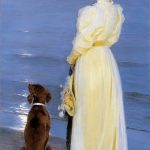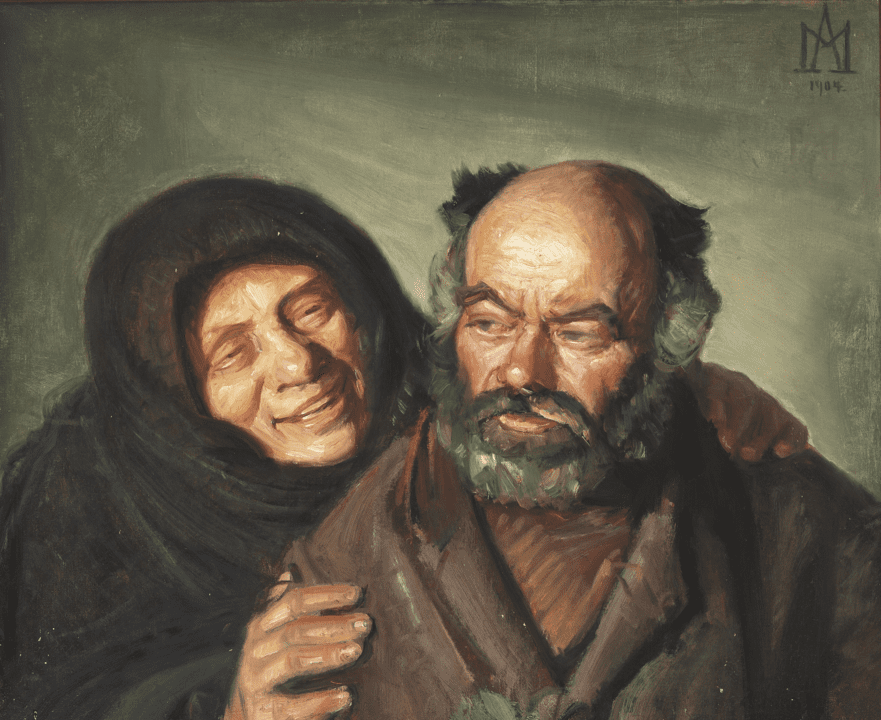
Michael Ancher, born on June 9, 1849, in Rutsker, Denmark, and passing away on September 19, 1927, in Skagen, Denmark, was a pivotal figure in Danish painting, renowned for his pivotal role in the Skagen Painters, a group of Scandinavian artists who gathered each summer in the northernmost part of Denmark. This community, drawn by the extraordinary quality of light and the simple, rustic life of the local fishermen, produced works that are celebrated for their naturalism, vibrant light, and the depiction of the everyday lives of the people of Skagen.
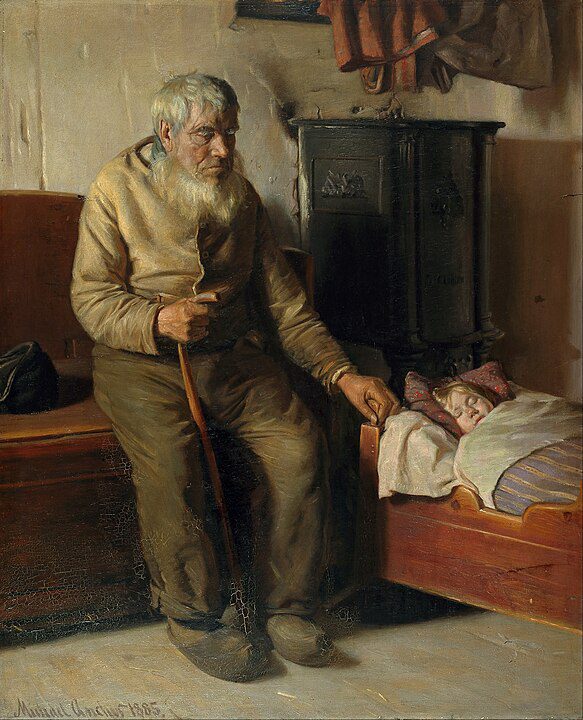
Ancher’s early life in Rutsker did not initially point towards a career in art. It wasn’t until he moved to Copenhagen to attend the Royal Danish Academy of Fine Arts that his artistic path began to take shape. There, he was introduced to the realist and naturalist movements that were sweeping across Europe, which greatly influenced his developing style. However, it was his move to Skagen in 1874 that marked the true beginning of his career as a painter. In Skagen, Ancher found his lifelong subjects in the fishermen and their community, depicting their daily lives with empathy and a deep respect for their hard work and perilous existence.
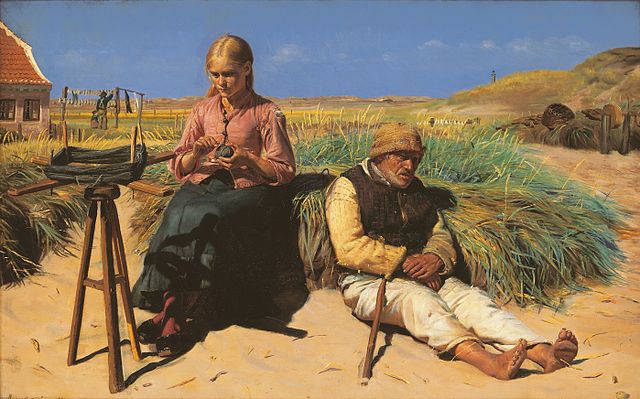
Ancher’s work is characterized by a strong sense of realism and a keen observation of light and atmosphere, attributes that made his paintings stand out among his contemporaries. His use of color and ability to capture the unique light of Skagen set his work apart, making him a central figure in the Skagen Painters group. His marriage to Anna Brøndum, herself a talented painter, further entrenched his ties to the Skagen community, and their home became a gathering place for artists, writers, and intellectuals, fostering a vibrant cultural milieu.
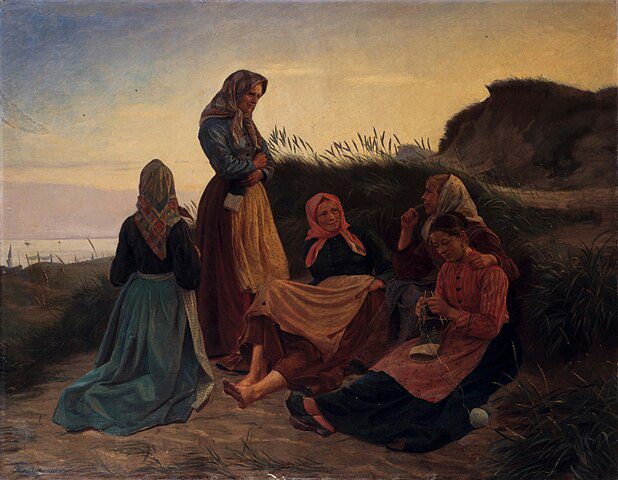
Among Ancher’s most celebrated works are “The Fishermen Dragging the Boats Ashore on Skagen Beach” (1883) and “The Lifeboat is Taken through the Dunes” (1883), which not only highlight his mastery of painting techniques but also reflect his deep commitment to capturing the essence of the Skagen community’s life.
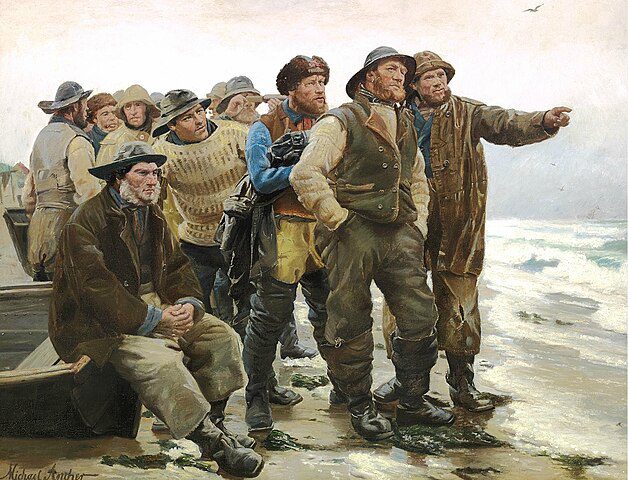
These works exemplify Ancher’s ability to combine technical skill with a profound humanism, portraying the heroism and dignity of the fishermen in their struggle against the sea.
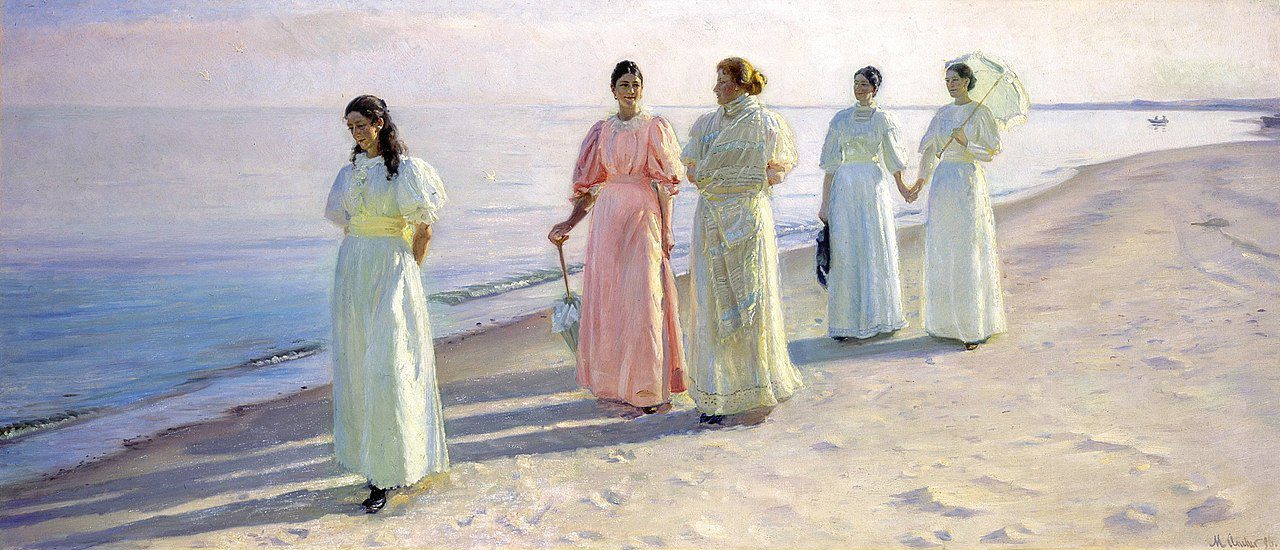
Ancher’s contributions to Danish art extend beyond his individual achievements. Through his work and his role in the Skagen Painters, he helped to define a unique chapter in Scandinavian art history, one that focused on the importance of place, light, and the depiction of ordinary people’s lives. His influence persisted through his teaching and mentorship of other artists, ensuring that the legacy of the Skagen Painters would endure beyond their generation.
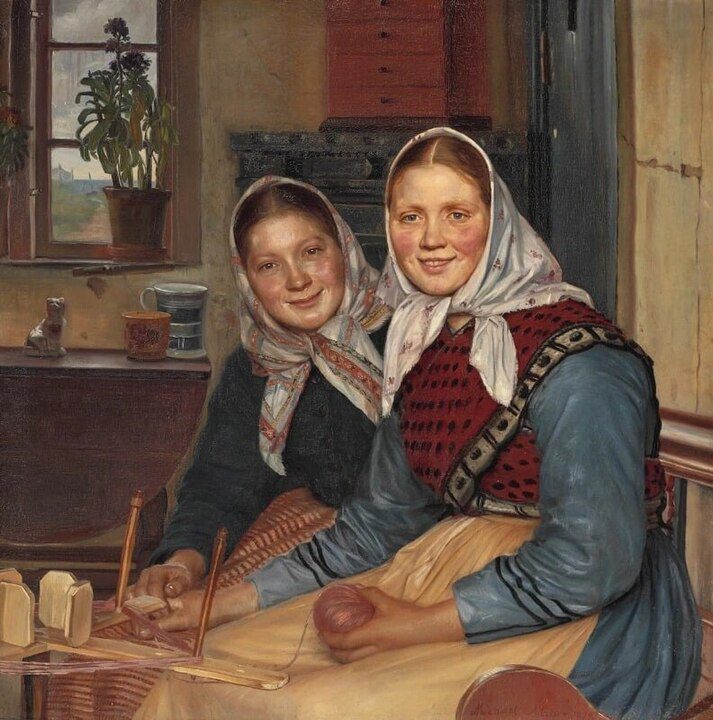
Today, Michael Ancher is remembered not only for his art but also for his role in creating a community that celebrated the beauty and challenges of the natural world and the simple, honest lives of its inhabitants. His work continues to be celebrated for its vibrant depiction of light and its compassionate portrayal of humanity, securing his place as one of Denmark’s most beloved and important artists.


